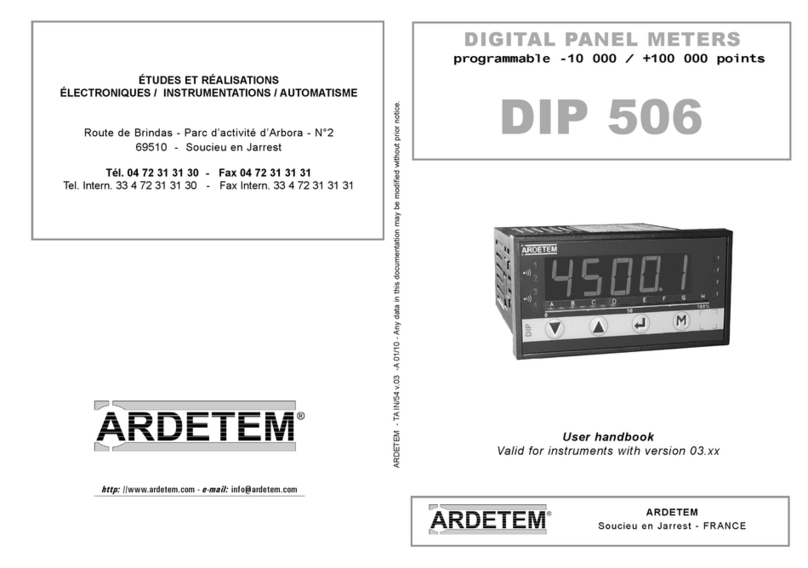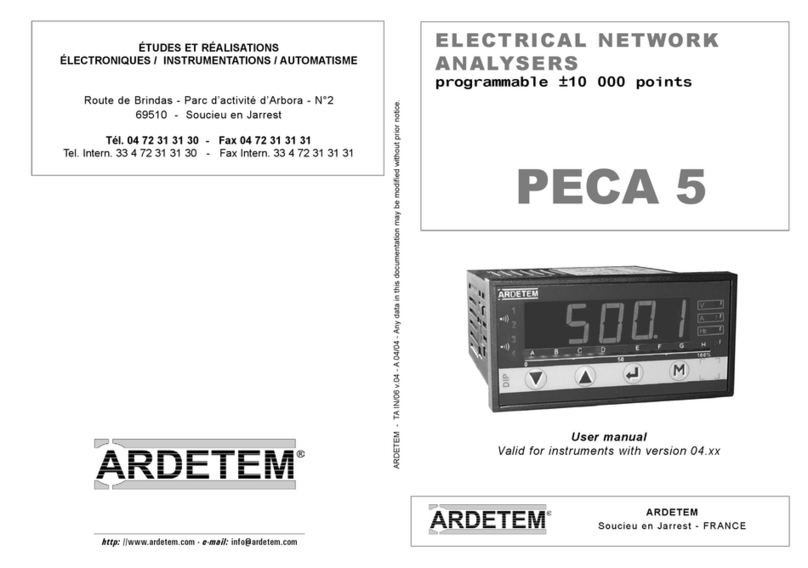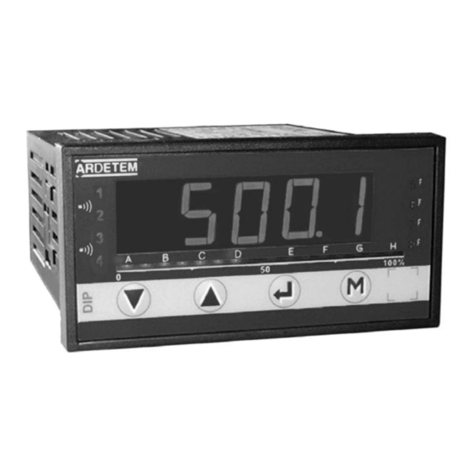
Doc. 97111-CA-G
PECA 30 / 30 E
5
General data
Housing Polycarbonate, black
Format 96 x 96 , DIN 43700 standard
Mounting Rack-mounted, requires 92 x 92 cut-out
Attachment By brackets
Protection IP 20 for housing - IP 40 frontal protection
Connection On rear face
2.5mm² capacity screw-in terminals for current
Indicators 3 x +/- 10 000 count indicators, extra bright digits, 9mm high
Parameter identification 12 unit and symbol labels
Programming By means of keys on front panel
Detailed instructions provided
Electrical data
Auxiliary Power Supply
Voltage High voltage version : 90 to 270 Vac or 88 to 350 Vdc
Low voltage version : 20 to 53 Vac or 20 to 75 Vdc
Power draw ac supply : 18VA , dc supply : 8W
Inputs
Voltage 2 programmable ranges Un = 150 or 500 Vac
Current In = 1 A or 5 A to be specified on order
Measure overload 1.5 In ; 1.2 Un
Electrical overload permanent : 750 V , 2 In transient 10s : 1000 V , 10 In
Power consumption voltage : impedance inputs 1 MΩ, current input : < 0,2 VA
Test voltage 2 KV , 50 HZ / 1 mn
Frequency 50 / 60 Hz – 400Hz available on request
Network type single phase, 3-phase balanced or unbalanced with or without neutral
Measurements
Number of parameters 44
Accuracy rating 0,5 for U, I and P ; 1 for energies (PECA 30 E)
Measurement method 3 currents and 3 voltages simultaneous sampling
32 bits digital computation
Display refreshing 3 per second
Digital filtering 5 keyboard-programmable integration levels
Energy backed-up , reading wtih 8 digits
Cycle time 350 ms 3-phase unbalanced network,
180 ms 3-phase balanced network.
Test conditions
Operating temperatures 0 to +55 °C conform IEC60068-2-1 and IEC60068-2-2
Storage temeratures -25 to +70 °C conform IEC60068-2-1 and IEC60068-2-2
Operating humidity 40°C and 93% no condensation, 10 days : IEC60068-2-30
Vibrations 1,5mm or 2g from 10 to 150Hz conform IEC60068-2-6
Applicable standard IEC 61000-4-2 : level 3 or 6KV contact, 8KV air
IEC 61000-4-3 : level 3 or10V/m from 80MHz to 1GHz with
Amplitude modulation 1KHz at 80%
IEC 61000-4-4 : supply level 4 (4KV),
Inputs / outputs level 4
IEC 61000-4-6 : 10Veff from 150KHz to 80MHz
Amplitude modulation 1KHz at 80%
Generic immunity standards : IEC 61000-6-2 emissions : 61000-6-4
Test standard : EN 55011 class A
Conform with the European Directive 89/336 rev. 92/31 : CE marking






























